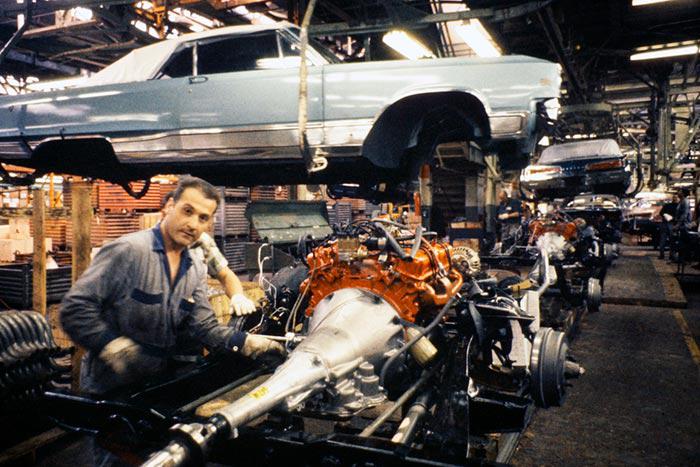David McDonald, who joined Chrysler Corporation in 1993 and was made head of North American customer experience at Stellantis in July 2022, chatted with Automotive News’ Vince Bond recently about how the company rose this year in J.D. Power’s Initial Quality Survey.

Stock photo from Windsor plant.
While the original story did not mention it, the “IQS” defines initial quality as the number of customer-reported flaws in new cars and trucks, within the first 90 days of ownership. In the past, this has given an advantage of marques such as Mercedes, because they had strong factory and dealership inspection routines. At Stellantis, where dealership inspection is at best chancy, it’s more likely to measure assembly quality, but will still miss longer-term issues such as, say, weak batteries or suspension components.
Key metric. According to McDonald, quality is not an “intense focus” from the CEO down to the assembly workers; it is, he said, one of a handful of key metrics. They share best practices from around the world, and if they discover a process or procedure that increases quality in any facility, it is quickly shared.
Plant, not HQ. Stellantis has, he said, pushed quality largely to the plant level, moving it from the corporate engineering group to the assembly plants. The plants have three or four dealerships they monitor, and engineers visit dealerships every Friday morning to see what’s happening with the customers and service staff; that information is brought back to the plant (this appears to have been a Peugeot practice). In addition, engineers and suppliers visit the plants for “warranty blitzes.”
One key point of contact. One key to success is making a single person at the plant responsible for quality—for every warranty claim and for every internal audit. That person is empowered to resolve any problem quickly and get “immediate containment” of ongoing issues. This was implemented around 8-12 months ago; McDonald pointed out that it is far faster to have a person in the plant immediately go to the point of a problem’s origin, rather than shipping someone in from the headquarters.
McDonald reiterated to Automotive News that they had the support of every team leader, and planned to keep improving and working on quality.

Analysis. Chrysler followed many of these steps in the 1990s, before the acquisition by Daimler, and also rose rapidly in the quality rankings. The focus of 1990s Chrysler was, though, more on Engineering and Procurement. They were willing to give up large sums of cash to suppliers who could improve the product or cut costs, though, and also brought service technicians into vehicle development.
The 1990s efforts tended to focus less on the plants, though they certainly had success stories there by involving manufacturing people from all levels in new-car development and, in some plants, empowering work teams. They created an Extended Enterprise System which brought suppliers in more closely, and included warranty costs and quality in with supplier metrics; one of the more important aspects of this was considering parts costs as part of a system, rather than as just individual parts.
The question that remains after reading this story is whether we will get another “1990s Mercedes” situation, where vehicles do quite well on 90-day surveys due to high assembly quality, but then fail early due to illusory cost savings in components or engineering flaws—e.g. suspension parts that fail before 80,000 miles or batteries that fail just after the three year warranty is over. These issues must be addressed as well.
That also brings up the question of how the executive-level quality metrics actually define quality; if it is defects per unit “as produced,” we will see the company top 90-day studies and fail three-year studies. If it is a compound measure including short- and long-term metrics, or if it is a greater-than-one-year metric (unlikely since it has already been affected by changes at most one year old), buyers of current vehicles should be quite happy three years down the line.
Discover more from Stellpower - that Mopar news site
Subscribe to get the latest posts sent to your email.
